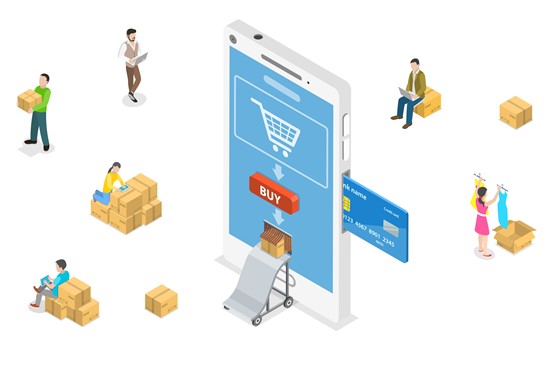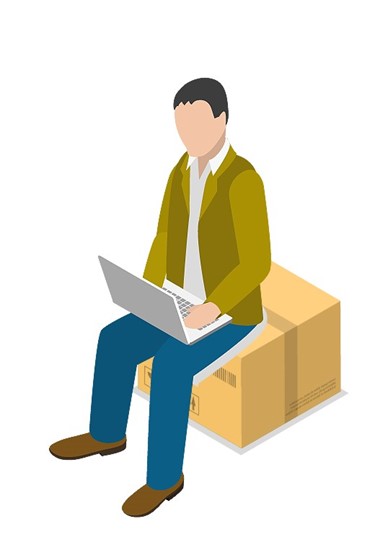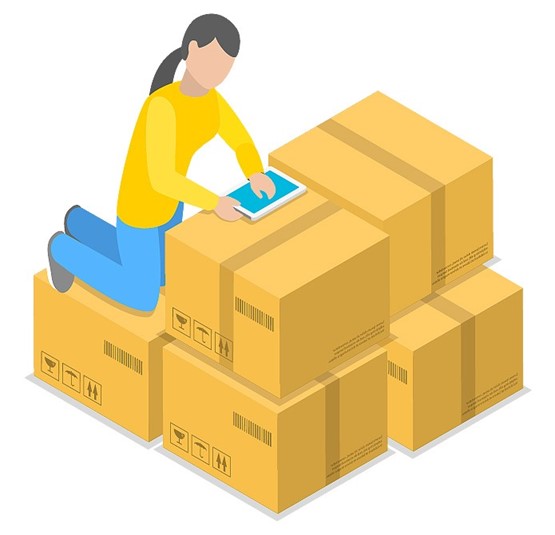 E-commerce may fundamentally change how car dealers sell vehicles as they try to keep up with increasing consumer demand for online buying.
E-commerce may fundamentally change how car dealers sell vehicles as they try to keep up with increasing consumer demand for online buying.
While online retailers such as Amazon have been at the forefront of this digital revolution, the automotive industry has been slow to react to these rapidly changing consumer behaviours and attitudes due to the complexity of the car purchase process.
Consumers have been able to buy and finance thousands of pounds worth of holidays and home improvements for several years. Yet until recently, customers have had to go into a dealership to sign a multitude of forms in order to complete the transaction or to get a guaranteed part-exchange valuation for their existing vehicle.
And while finance aggregators, such as Codeweavers and iVendi, may allow consumers to carry out their car finance applications digitally, as yet there has been no fully joined-up solution that enables them to complete the entire car buying process online.
Even with cutting-edge retailers such as Rockar, the consumer still has to first manually fill in a finance application form.
Motor groups such as Arnold Clark and Vertu Motors have developed and linked systems themselves, thanks to their substantial resources.
Integrating compliant online auto sales systems
But now, thanks to new end-to-end, fully integrated and compliant systems, smaller dealers can finally tempt online buyers – offering every step of the journey online across multiple channels, streamlining everything and doing away with the need for face-to-face, phone or email contact with the dealer.
GForces’ NetDirector Auto-e e-commerce solution has already been adopted by five UK clients, with a further 20 due to come online by the end of this July and plans to roll it out in the Middle East in August.
The solution was revealed at the start of 2019, with RRG Group, Chorley Group, Infiniti retail Group and Croyland Car Megastore all signing up in the UK.
So far, its main application is for used car sales, but there are plans to include new cars once it is fully bedded in.
Paul Stokes, head of online retailing at GForces, said the new system allows dealers to do everything online, from enabling the customer to apply for finance and get an instant credit decision, and obtain a guaranteed part-exchange valuation, through to part or full financial settlement for a vehicle, and digital signature of paperwork. He said an interface with specialist providers Codeweavers, Cap HPI and Aston Barclay provides the customer with a seamless digital purchasing experience.
“The system is fully integrated within the retailer’s website,” he said. “Rather than taking the customer to separate domains, URLs or browsers, it’s all there in one place on the retailer’s website.”
Auto-e uses Codeweavers to provide credit decisions and quotations based on its own and approved lenders’ annual percentage interest rates. Once the consumer has completed their finance application, all of that information is sent directly to the lender, whose decision is then relayed back to the consumer via the dealers’ website.
Part-exchange valuation a vital part of online motor retail
In addition, the solution offers a guaranteed part-exchange valuation through its interface with Cap HPI and Aston Barclay. GForces is also in discussions with Cox Automotive about integrating to provide a similar service.
“We have been quite agnostic in offering the retailer choice depending on what their risk appetite is,” said Stokes. “And we have been talking to a number of part-exchange service providers to see if we can collaborate with them.”
 The system also enables the customer to either pay outright or put down a deposit on the vehicle through a payment mechanism called Stripe.
The system also enables the customer to either pay outright or put down a deposit on the vehicle through a payment mechanism called Stripe.
A further feature is a ‘My Account’ section which stores all of the customer’s data, enabling them to join or leave the buying process at any stage. For those who don’t want to create their own account, there’s a guest checkout that also allows them to complete each step of the purchasing journey.
Stokes, who was previously managing director of Rockar, said the problem was that there were previously none of these solutions available to the consumer. This was because dealers have traditionally pushed the consumer down a lead generation route of filling in enquiry forms and then arranging face-to-face appointments to sell them the car, as well as a nervousness about losing control of the sales process by going online, he said.
But now all that has changed, Stokes said, with a greater consumer demand to buy online. This is reflected, he said, in the fact that 52% of customer transactions are done outside of business hours, while there is also a 60% conversion rate, significantly higher than for traditional lead enquiries, according to GForces’ research conducted between January and March.
“We are seeing a huge appetite from consumers wanting to transact online, putting themselves in control of the whole buying experience at a time that is both right and convenient for them,” he said. “That is borne out in our research, which shows that most of them go online to transact outside of the normal 9 to 5.”
Stokes added that dealers’ fears of losing margin by selling the vehicle online have also proved unfounded, with GForces’ statistics showing that none of the transactions went through with a negotiation price or any haggling over the part-exchange valuation. This is because the customer feels they are getting a fair price, he believes.
For now though, Stokes said the focus is on refining and upgrading the system based on performance data and client feedback. He said GForces is talking to manufacturers about how the solution can be integrated within their businesses, but the biggest stumbling block is price.
“They have the conundrum that they typically market the vehicle at their own recommended retail price, whereas the retailer can do so at a transaction price,” said Stokes. “They are at a disadvantage that will only ever change if the model with their franchised dealers changes from a margin to an agency-based model.”
E-commerce solution 'increased used car sales by 5%'
Chorley Group, which operates six dealerships across Lancashire and Greater Manchester, went live with Auto-e in February. It said the new solution increased used car sales by 5% during its first full month of trading, while 70% of its 60 orders to date have converted into sales.
Sales director Adam Turner said there were initial reservations from the sales team, but they were quickly won over by the fact that the majority of customers still have to visit the showroom at some point, if only to collect their vehicle.
 Chorley Group hasn’t had to make too many adjustments to accommodate the new system, he said. It already formed its own dedicated online digital response team two years ago, which focuses solely to following up on digital leads from client applications, manufacturer sites, email, live chat and social media, he said.
Chorley Group hasn’t had to make too many adjustments to accommodate the new system, he said. It already formed its own dedicated online digital response team two years ago, which focuses solely to following up on digital leads from client applications, manufacturer sites, email, live chat and social media, he said.
Turner said the group is also drawing up a marketing plan that it will put into effect once it has solved any teething problems. It also plans to use Auto-e for new car sales, many of which it delivers at distance.
“Auto-e has completed our online customer journey really well,” said Turner. “It has enabled us to capture a different type of customer by giving them a greater confidence to apply for finance because they feel more comfortable about doing it online and not necessarily having to sit down in front of somebody.”
Infiniti Retail Group has also integrated Auto-e with its new customer contact centre.
Jamie Buckley, the group’s marketing manager, said the key selling point of the new solution, which uses Alphera to provide immediate credit decisions, was its ease of use.
Used car supermarket Croyland’s new service incorporates Barclays Partner Finance to provide customers with a rapid decision on their application and streamline the buying process through its Barclays Sign Anywhere tool, enabling them to sign documents digitally.
Mark Swindells, general manager, said: “We have already achieved retail success through our website and can now further extend our digital service with the addition of part-exchange agreements, finance solutions with an instant decision, right through to signing the deal.”
Other online retail platforms could also shake up the market. Cazoo, a used car buying and rental website created by Zoopla founder Alex Chesterman, is set to launch this year.
On the manufacturer side, Summit Media launched an automotive technology suite of services six years ago, providing components that manufacturers can use to improve their website functionality. The different components can be configured to provide everything from new vehicle reservations to full e-commerce, joining up the consumer experience across multiple channels.
Jacqui Barker, Summit’s head of sales for Europe, said it has been improving searchability on manufacturer websites by pre-configuring vehicles based on what the customer is looking for at a particular price point according to its machine learning led technology by incorporating available stock and price data. This might include, for example, entry-level, mid-range and luxury models, rather than the lengthy assembly line configuration method used currently, she said.
“We have developed an internal and external sales tool on Peugeot’s website that allows users to see what difference adding further specifications on their vehicle makes to their monthly finance payment,” she said. “When PSA Group launched its online tool in the UK, they found that customers tended to upgrade with extra features because the effect on their monthly finance was perceived to be minimal.”
Barker added that Summit has recently launched electric vehicle websites for Honda and Peugeot to enable them to take reservations. And it is also behind Jaguar Land Rover UK’s new online car sales function.
“Essentially, the OEMs will have their own website content and data, so it’s a case of adding the relevant components and joining up the suppliers and processes required to enhance the customer journey, and making it happen in the easiest, quickest, most
seamless way,” she said.
“It’s not just about plugging some technology in somewhere and hoping it works – we need to have a thorough understanding of consumer behaviours, and the best way to optimise that customer experience and drive traffic to
their website.” ALEX WRIGHT
>> Read more AM stories about e-commerce in motor retail














Login to comment
Comments
No comments have been made yet.